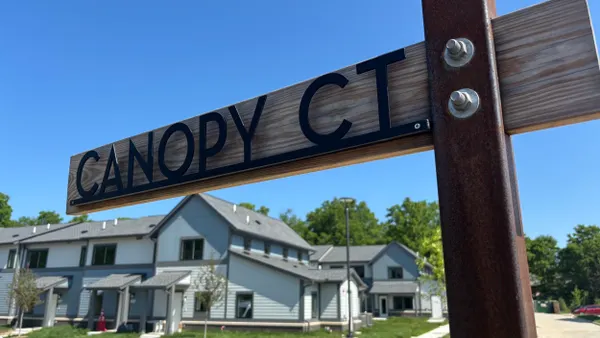Dive Brief:
- California legislators approved a pair of bills Monday that could allow the development of new housing at underutilized commercial and retail spaces such as largely vacant strip malls.
- The state Assembly’s AB-2011 and the Senate’s SB-6 intend to help boost California’s available housing stock, the shortage of which has contributed to the rising cost of buying or renting a home. The legislation still needs a signature from Gov. Gavin Newsom.
- “These bills will change the trajectory of California’s housing crisis,” said Buffy Wicks, who chairs the Assembly’s Committee on Housing and Community Development, in a statement. “The impact will be historic — no longer will lack of land be an issue for housing production.”
Dive Insight:
To address California’s housing needs, 2.5 million additional homes need to be constructed over the next eight years, according to the state Department of Housing and Community Development’s 2022 statewide housing plan, released earlier this year. That consists of about 421,000 homes for people with moderate incomes, and about 1 million for people with low or very low incomes.
Housing experts and real estate industry leaders during the Urban Land Institute’s spring meeting in April said retail space is overbuilt in the U.S., and the shift to online shopping has prompted retailers to reduce their square footage. Replacing those vacant and underutilized strip malls and shopping centers with developments that mix residential housing with stores, restaurants, hotels and commercial space could help the state address its affordable housing needs, experts said.
However, local laws that prevented residential housing in commercially designated zones restricted such developments in many cities throughout the state.
Both bills allow the construction of housing in areas that are zoned for office, retail and parking that are located in such commercial zones. The Assembly’s bill allows housing developments in those areas that meet certain affordable housing and environmental requirements.
The Senate bill, expected to increase housing for middle-income earners, allows the construction of market-rate housing in those zones following a streamlined local approval process. However, the construction of those developments needs to meet certain labor standards, part of an agreement lawmakers reached with trade unions, which backed the legislation.
If both become law, developers would have the option to meet the standards laid out in either the Assembly or the Senate bill.
Efforts to override local authority or reform restrictive zoning laws historically have received pushback. The advocacy group Livable California said the Assembly’s bill would take flexibility away from local jurisdictions “to place housing where it best meets the needs of the community.”
However, groups advocating for the construction of new housing in the state, including California YIMBY — an acronym for groups that support for housing density, “yes in my back yard” — praised the legislation.
In a statement, state Sen. Anna Caballero said the Senate bill “would spur the creation of housing in existing commercial and retail space, and help make homeownership more attainable for working families.” The assembly bill, meanwhile, would “accelerate production of millions of affordable and mixed-income housing along transit-friendly commercial corridors,” Caballero added.











